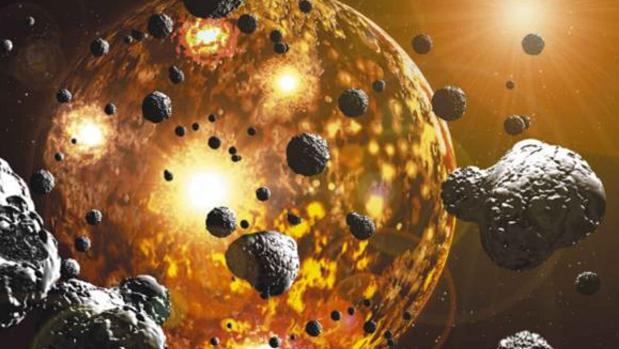Valladolid – The certainty about the existence of life on Mars will come after “a lot of time and debate”, of “long and very hard discussions” that can even last years, has affirmed Professor Fernando Rull, responsible for the calibration system of the Perseverance space probe.
One day after the successful arrival of Perseverance to the red planet, after a seven-month trip, Rull appeared at a press conference to explain the participation of the research group he directs at the University of Valladolid (UVa) (north) within that NASA space mission.
«It will take a lot of time and debate, long and very hard discussions, to know whether or not a collected sample is the result of biological activity. There will not be a scientific news for a long time, it will even last for years, “he said about the complexity involved in analyzing a compound that emerged millions of years ago.
When a living being, a bacterium or a fungus produces certain chemical compounds, “this alone is not proof of a biological activity” which would be unequivocal in the case of “catching the bug in situ” in this work, but after millions of years “it is very difficult to know whether the compound comes from a physical-chemical process or from a biological activity,” he insisted in an informative key.
The Perseverance, a six-wheeled and three-meter-long rover, has an instrument called Supercam, which consists of several spectrometers (light emitters that will provide information) designed by NASA, attached to a mast.
The optics and the laser of this Supercam have been projected in Toulouse (France), while the calibration, both the technique and the cross, has been the responsibility of the research team led by Professor Fernando Rull at the Spanish university.
Once on Mars, Perseverance will carry out intense work during the first three months, with special emphasis on the first three weeks, during which the state and effectiveness of the instruments will be checked before beginning the surface movement works, in mid-March. .
Based on the data that is received every day through the different automatic execution command lines, “scientists will plan what should be done in the long term, what should be explored,” Rull said about a space probe which has a useful life of at least one year, although sometimes “it lives and survives for very long periods,” he stressed.
The technological “extraordinary complexity” of the Supercamp performs, on the other hand, a very simple task such as knowing the chemical and mineralogical composition of the materials with the projection of a pulsed laser that offers very precise information on all this, he added. .
This camera will contribute to the search for carefully selected materials for their possible return to Earth in the future, “when there is the possibility of return missions” that currently cannot be given, since all the material sent to Mars in this mission will stay there.
In all this work, the Supercamp needs an adequate calibration that Professor Rull and his team have been in charge of at the headquarters of the UVa-CSIC Associated Unit at the Astrobiology Center located in the Castilla y León Technology Park, in Boecillo ( Valladolid) (north), from where this past Thursday they followed the landing of Perseverance on the red planet.
For his part, the rector of the UVa, Antonio Largo, in addition to his pride and satisfaction for the contribution of this academic institution to a “historic milestone in world science and technology.”

